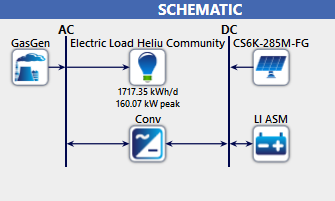Sustainable Community Electrification: A HELIU Residency Case Study on Modeling an Optimal Hybrid Renewable Power Systems
Keywords:
Hybrid, Renewable, Power, Sustainability, and CommunityAbstract
With the increasing energy consumption globally and the growing need for an eco-friendly sustainable, reliable solution, hybrid systems combining renewable and non-renewable resources offer efficient economic solutions. This study explores a scalable solution in the development of an optimal Hybrid Renewable Power System (HRPS) towards a sustainable power supply to the growing community of Heliu Residency in Enugu State, Nigeria. And further emphasis was focused on the integration of Solar photovoltaic (PV) modules, energy storage units (ESU), and small natural gas power plants (SNGPP). The research considered the estate’s average and peak demand to optimize the HRPS primary component in minimizing energy, and annual operational costs (AOC), and achieving high system availability. The current deregulation in the power industry and downstream oil and gas sector has led to skyrocketing energy tariffs and higher energy costs with conventional alternatives. The base case, being the national power grid yielded a COE of $0.127/kWh. In comparison, the optimized HRPS configuration (200kW PV, 200kW SNGPP, 700Kwh ESS) achieved a COE of $0.0394/kWh about N66.98 at N1,700 per $1, with an initial capital cost (ICC) of $151,500 about N257million at N1,700 per $1, an AOC of $24,610 about N42million per annum and a total net present cost (TNPC) of $32,998,500. The proposed system showed zero unmet loads, zero capacity shortage, and a 5kWh/day excess energy with a renewable penetration fraction of 43.1%. The proposed system showed an improved performance considering the key metrics as compared to the base case economically, further enhancing sustainability and scalability.


